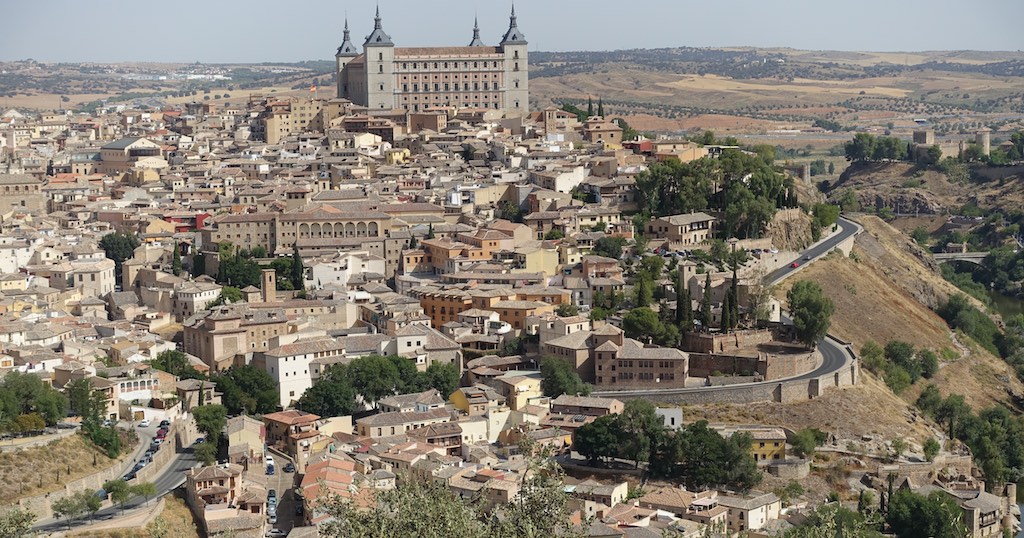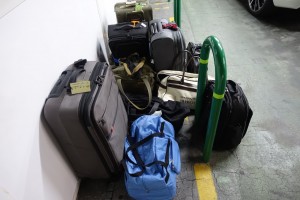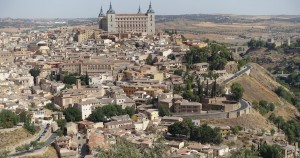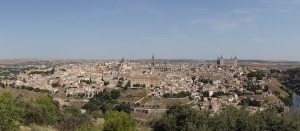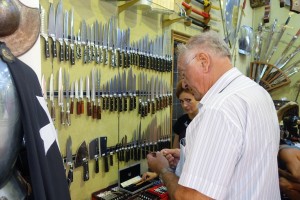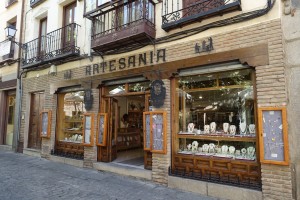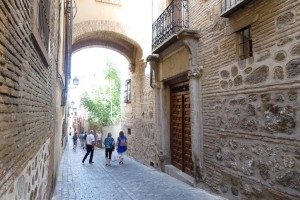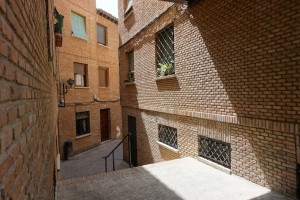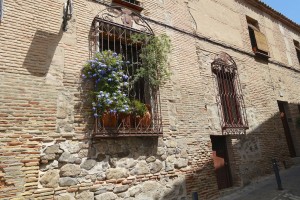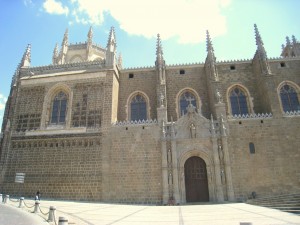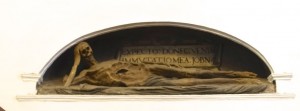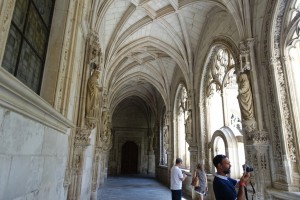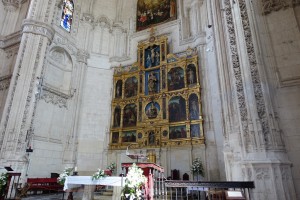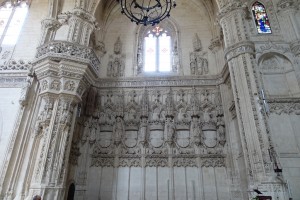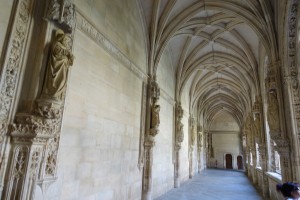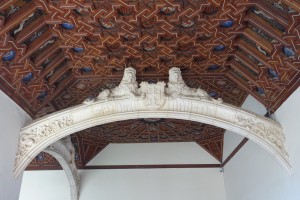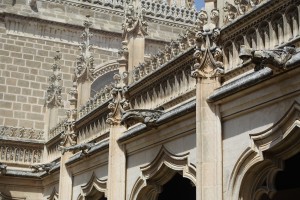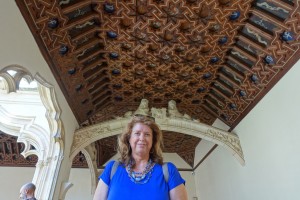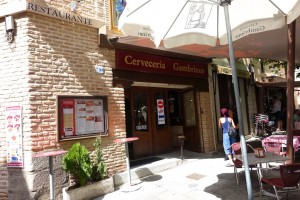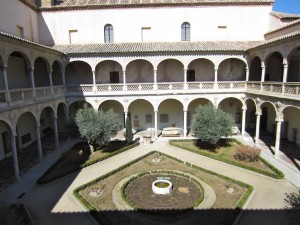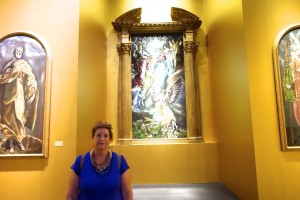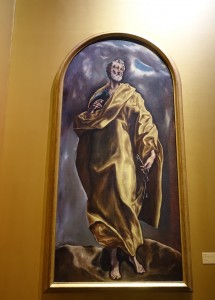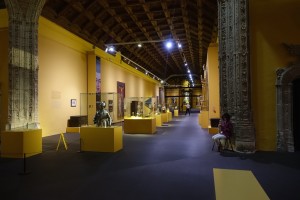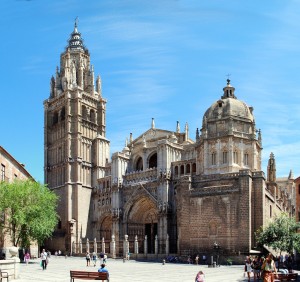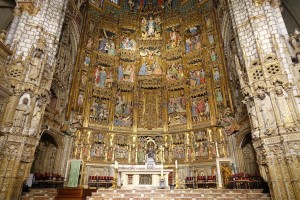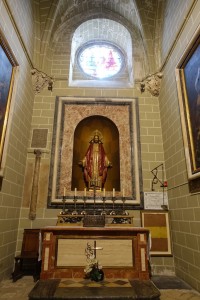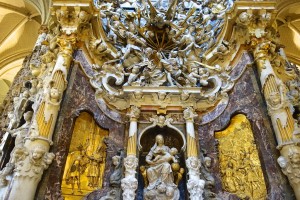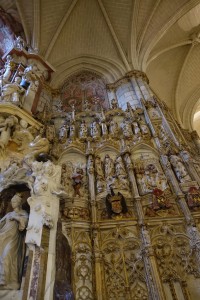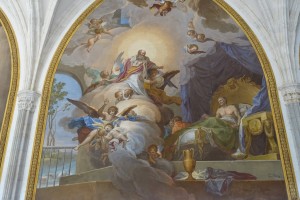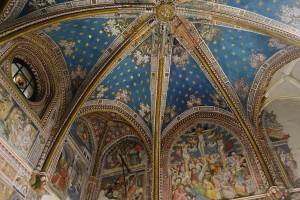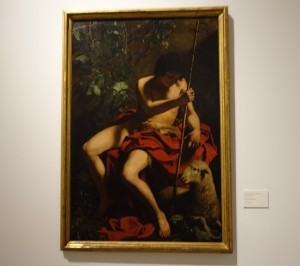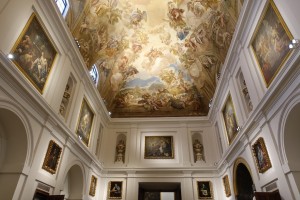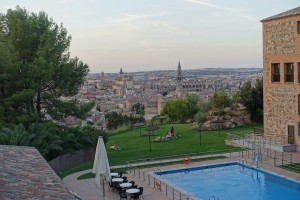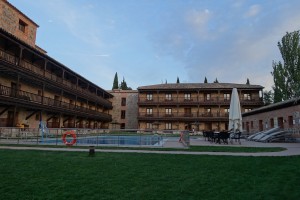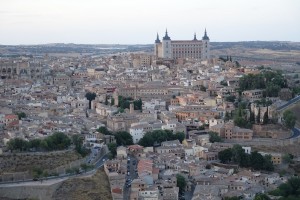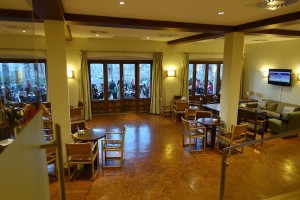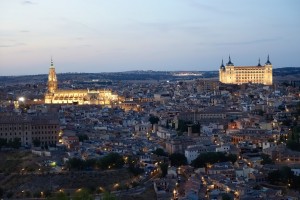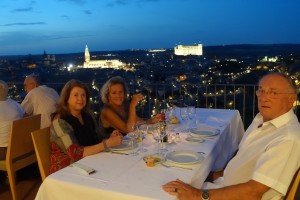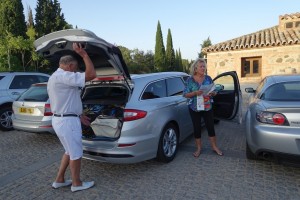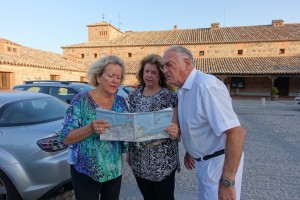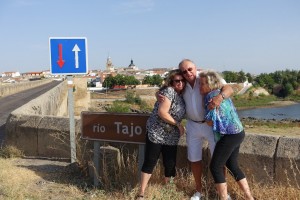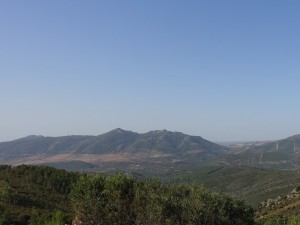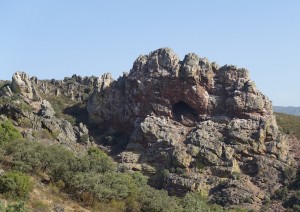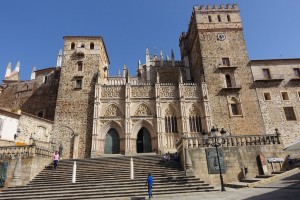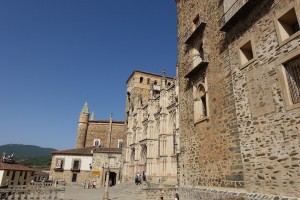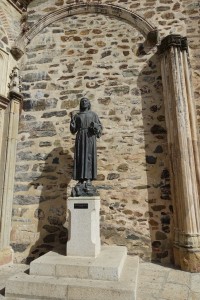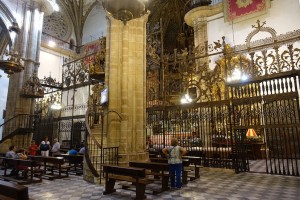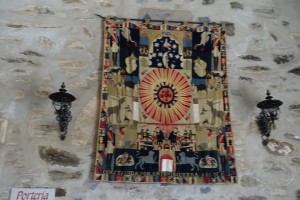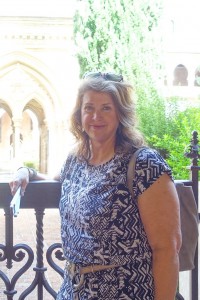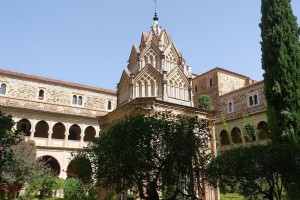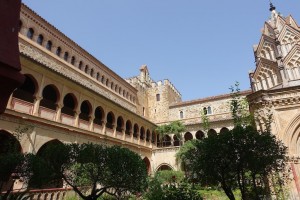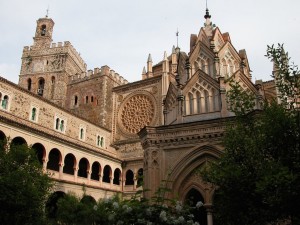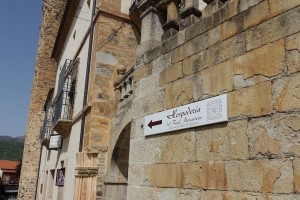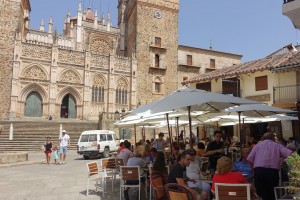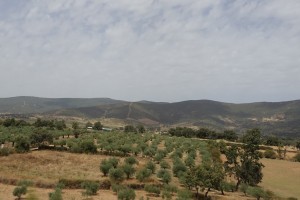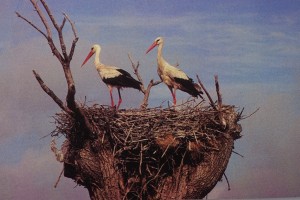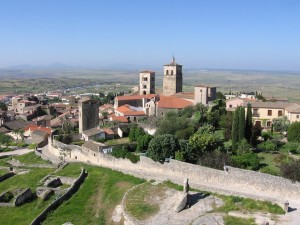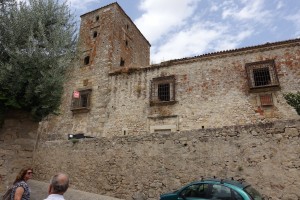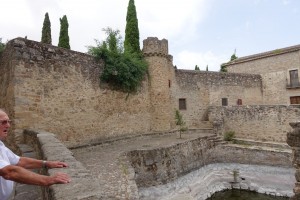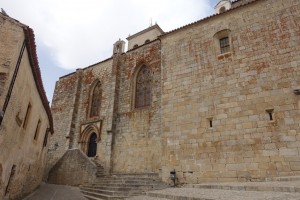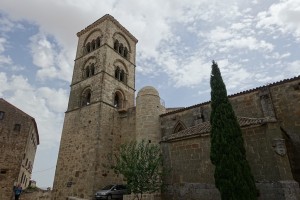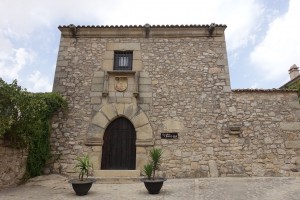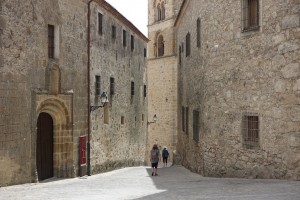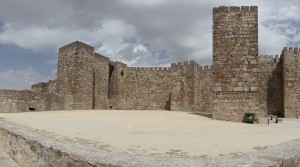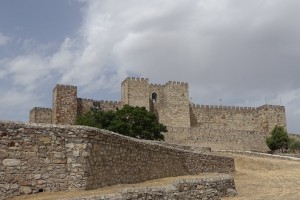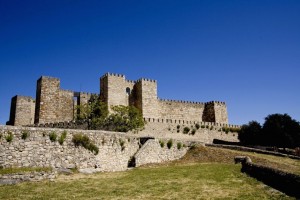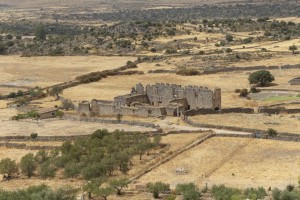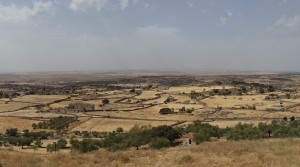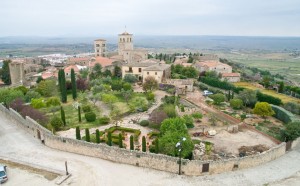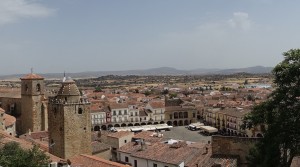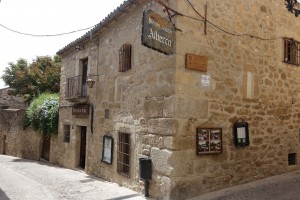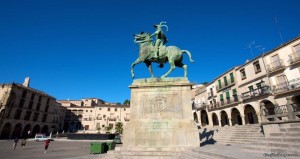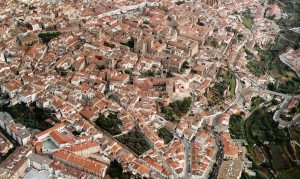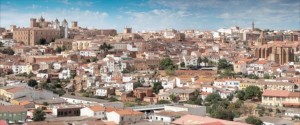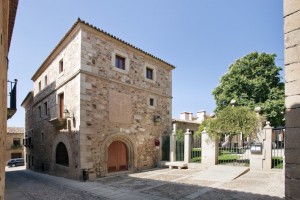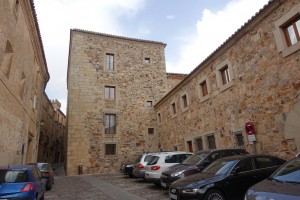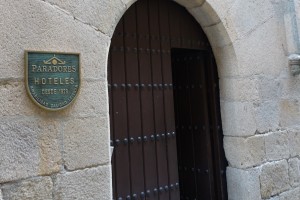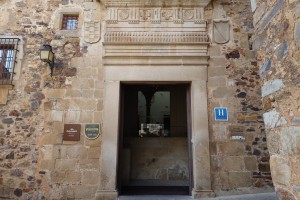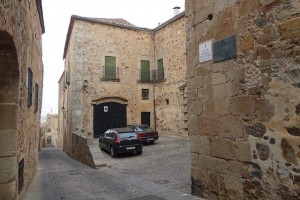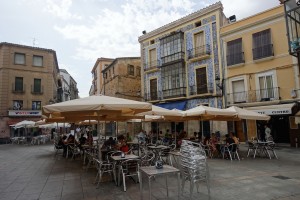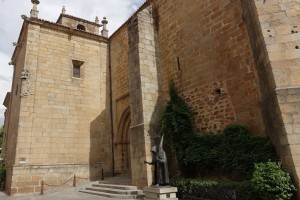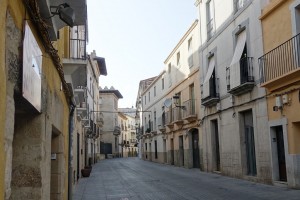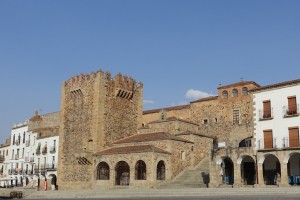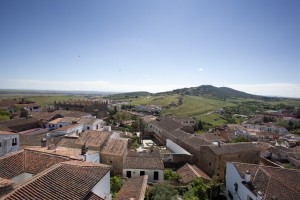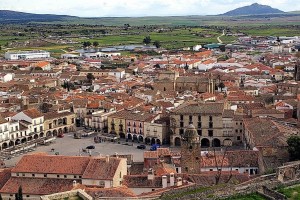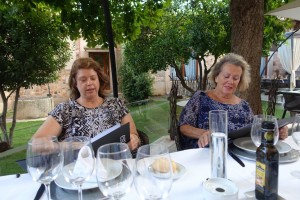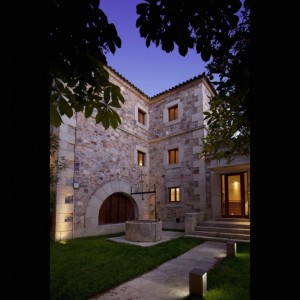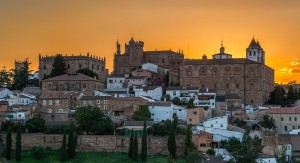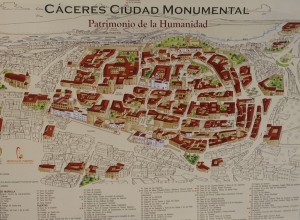Sat Aug 29
Toledo
After a nice breakfast at the hotel we found a large taxi and proceeded to pick up the rental car. There was a problem with the car rental but we sorted it out and found a car big enough to hold all of our luggage.
The trip to Toledo was planned to be the shortest driving leg of the whole trip. Nancy and I were familiar with the Garmin GPS and worked to set it up for Peter and Gertrud to try and navigate.
We checked into the Parador in Toledo, which was an amazing building on the hill overlooking Toledo. The rooms were nice and large, good views, and nice atmosphere. Looking back we though this was one of the nicest and most comfortable Paradores.
We rushed down into town with the car since I wanted to get some Toledo steak knives and the shop in Nancy’s guide book said the best place was going to close at 2PM. We rushed through the narrow streets with the GPS and found a place to park fairly close. Unfortunately, the shop was a bust.
But it was the start of the shopping district and we proceeded to some stores and ultimately found some representative knives of Toledo for our collection. Our clerk spoke excellent English and was from Romania. Nancy, Gertrud, and Peter got into the shopping as well. At one shop I finally found a piece of jewelry for Tabitha of the type I had been looking for awhile. I got approval from Nancy and Gertrud as I matched the ear-rings to the necklace. It uses materials from both Poland and Spain … which seemed appropriate.
We hiked down the shops and city streets to visit the Monasterio de San Juan de los Reyes. The monastery’s construction began in 1477 following plans drawn by architect Juan Guas, and was completed in 1504. It was dedicated to Saint John the Evangelist for use by Franciscan friars. In 1809 the monastery was badly damaged by Napoleon‘s troops during their occupation of Toledo, and abandoned in 1835. Restoration began in 1883 but was not completed until 1967. The monastery was restored to the Franciscan order in 1954. The monastery is an example of Gothic style with Spanish and Flemish influences.
We then hiked to the Museum of Santa Cruz. It was created from a medieval hospital. The museum divides its collection into three sections. Archaeology, dedicated to Roman, Visigoth, Arabic and Mudejar cultures; Fine arts, with a major collection of Toledo painting from the XVI-XVII Centuries, and works of art by artists such as El Greco; and Industrial Art, exhibiting examples of popular culture and local traditional craftmanship (ceramics, glass, textiles, iron work, and gold and silver work).
We then visited the Cathedral of Toledo. The cathedral of Toledo is one of the three 13th-century High Gothic cathedrals in Spain and is considered, in the opinion of some authorities, to be the magnum opus[1] of the Gothic style in Spain. It was begun in 1226 under the rule of Ferdinand III and the last Gothic contributions were made in the 15th century when, in 1493, the vaults of the central nave were finished during the time of the Catholic Monarchs. It’s art collection was amazing and it could probably rival that of many museums.
We had a particular challenge of parking and driving in Toledo with our full-size car (Ford Mondeo). Most park at the visitor’s center, but we drove into town and found a parking space. When leaving town, however, we encountered some incredibly narrow streets and passages that seemed to just have 10 cm clearance on both sides. Peter did an excellent job maneuver the streets with nary a scratch.
We enjoyed dinner on the balcony at the Toledo Parador. We watched the sunset and the lights develop to light up the Toledo Cathedral and the former Armory. It was quite picturesque as can be seen below.
[19,931 steps]
Sun Aug 30
After a nice breakfast at the Parador (long buffet that was quite nice) we packed up the car prepared for our trip to Caceres with stops in Guadalupe and Trujillo. This will be our longest day of driving and Peter did it all himself.
Here’s where we worked on the Garmin GPS. Nancy and I use them quite a bit on our trips and they are tricky to maneuver. So we showed Gertrud how to use, but ostensibly we operated it from the backseat. I will confess that maneuver through the roundabouts was particularly tough as the likelihood that the vice would correctly state the correct number of the exit (take the third exit) was about 50%. So we had to study the angle of exit as we approached and study the distances as we went around the circle. Each day we may incorrect excursions about 4 or 5 times.
On the way we used some back-roads and came to a single lane bridge that had traffic in both directions. After we entered the bridge with our full-size car, a car entered from the other side. Fortunately there was a little carve out on our side part-way down the bridge so we zipped ahead and then squatted over to the right and the oncoming car passed us with ten’s of centimeters to spare.
Guadalupe
Guadalupe has the Monastery of Santa Maria de Guadalupe. One reason Gertrud wanted to take us here is that as a graduate student she had wandered the countryside with 3 friends and came to Guadalupe one evening. They let them and allowed them to stay overnight in the monastery.
Now the monastery has a hotel in it similar to a Parador. It use to host more than 200 monks and now only has 9.
Visiting had to be by tour only and the guide was quite interesting, even if it was given in Spanish. I picked up a few words here and there, but the intent was clear. No pictures were allowed except in the courtyard. It’s art collection was quite good, but not on par with Toledo. It was one of the most important monasteries in the country for more than four centuries. UNESCO declared it a World Heritage Site in 1993.
The monastery had its origins in the late 13th century, when a shepherd from Cáceres, named Gil Cordero, discovered on the bank of the Guadalupe River a statue of the Blessed Virgin,[1] which had been apparently hidden by local inhabitants from Moorish invaders in 714. On the site of his discovery a chapel was built, dedicated under the title of Our Lady of Guadalupe.
King Alfonso XI, who visited the chapel more than once, invoked Santa Maria de Guadalupe in the Battle of Rio Salado. After gaining the victory, he ascribed it to the Madonna’s intercession, declared the church at Guadalupe a royal sanctuary and undertook an extensive rebuilding program.
The monastery is rich in associations with the New World, where Our Lady of Guadalupe is highly revered in the Mexican Basilica of Guadalupe and elsewhere. It was here, in Extremadura, that Christopher Columbus made his first pilgrimage after discovering America in 1492 and it was here that he first thanked heaven for his discovery.
We had lunch (tapas) in the courtyard just outside the monastery. Once refreshed we hit the road for the next stop.
Trujillo
We then head for Trujillo which is a town with imposing medieval ruins as you drive up. However, the fort and town have yet to be rebuilt. Many of the gates (tall structures around the fortified town) are for sale and available for renovation. We tried to drive up to the entrance of the castle but must have made a wrong turn. We ended up going down a narrow street that Peter swears had less than 10cm clearance.
Trujillo is the home town of Francisco Pisarro, the conquistador that conquered the Incas. He is now viewed as not the hero he once was as the stories of his brutality are now fully incorporated into the history. Nonetheless his house is privately owned and is open hours a day by the owners as a small little museum.
I hiked up to the castle and got several pictures of he surrounding area. The castle overlooks the current town’s main plaza. I saw what appeared to be hundreds of people under the tarps in the main square for tapas.
As we left we all felt that the town had “good bones” and could probably be beautiful after a restoration. The problem is that the town is “off the beaten path” and attendance is probably risky. Most likely it will will never by converted into a true tourist attraction or resort village, but it was still fun to visit for a couple of hours.
Interestingly, the countryside has many large nests and the poles and trees. We learn these are the “Storks of Trujillo.”
Caceres
Caceres is another ancient town with medieval buildings. The center of the town has been mostly restored and it’s a series of windy stoned composite streets with a few modern roads in a few places. The Parador in Caceres (link) is a restored building in the midst of the restored homes. Perhaps it was a monastery or church at one time. It was tricky to find and the stone streets were again a challenge to maneuver. We park near the Parador, hike in our bags, and then Peter takes the car to a garage that is a few blocks away.
After checking in I scout around the town a bit and find the main plaza with numerous restaurants around it. The most direct route there is probably about 300 meters via walking.
We get ready for dinner and head for the square. There are dozens of restaurants and the one we pick has a sweet country girl that tries to correct Peter that his favorite before dinner drink (FIno by Tio Pepe, a sherry blend from 5 different years) is really vino. The consensus is to head back to the Parador for a more sophisticated dinner in the garden. Then meal is quite nice.
[15,109 steps]
View the Full SmugMug Gallery:
Navigate Website Menus to: Resources > SmugMug Gallery > Trips > Spain 2015; or
Use the Following: link
Gallery of Photos for Part 2
Share this Post
